El Paso Economic Indicators

April 1, 2022
El Paso’s economic expansion continued in February. Both the business-cycle index and labor market saw gains. However, the unemployment rate remained flat. Strong retail sales growth was buoyed by pandemic-related federal aid, and third quarter 2021 average weekly wages fell slightly from their record high in 2020.
Business-cycle index
The El Paso Business-Cycle Index rose an annualized 5.4 percent in February after expanding 5.2 percent in January (Chart 1). Compared with prepandemic levels (February 2020), the index has recovered and is up 1.3 percent.
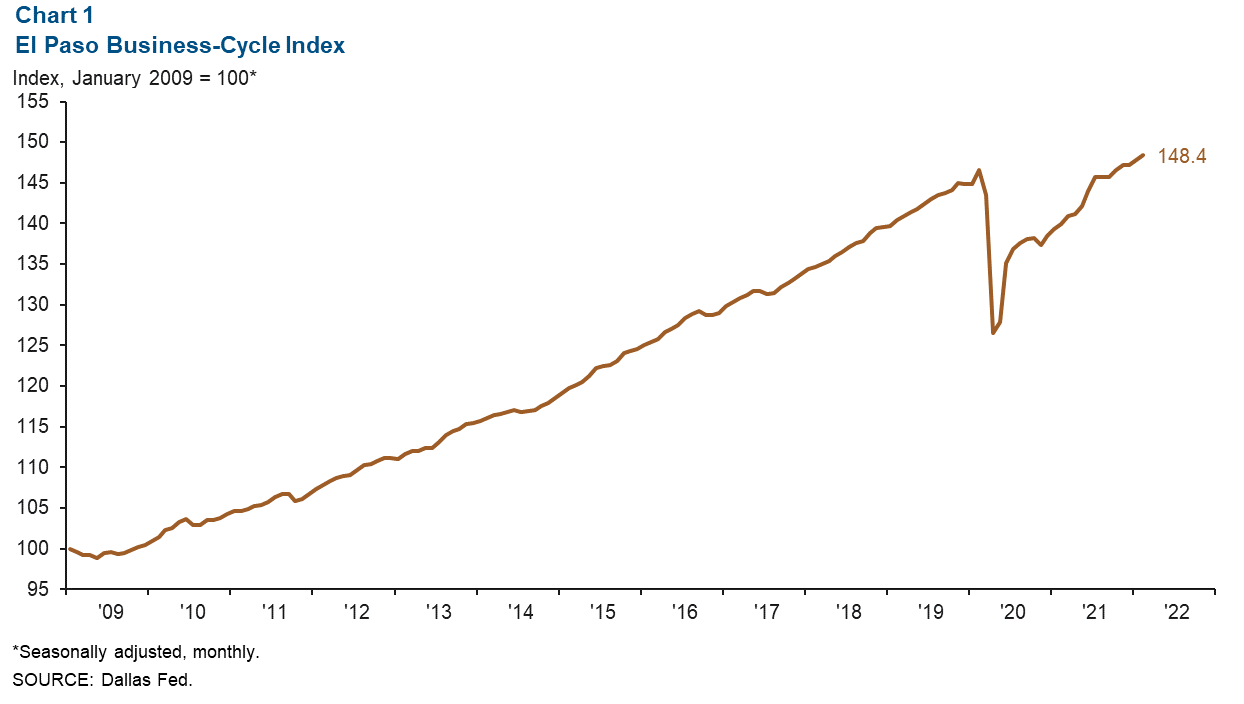
Labor market
Payrolls post gains
In February, payroll employment in the metro rose an annualized 2.5 percent, or by 653 jobs (Chart 2). Job gains were driven by growth in trade, transportation and utilities (771 jobs), leisure and hospitality (310), financial activities (105) and construction (77). Employment was little changed in the information and professional and business services sectors but dipped in education and health services (-257 jobs), government (-223), other services (-75) and manufacturing (-59).
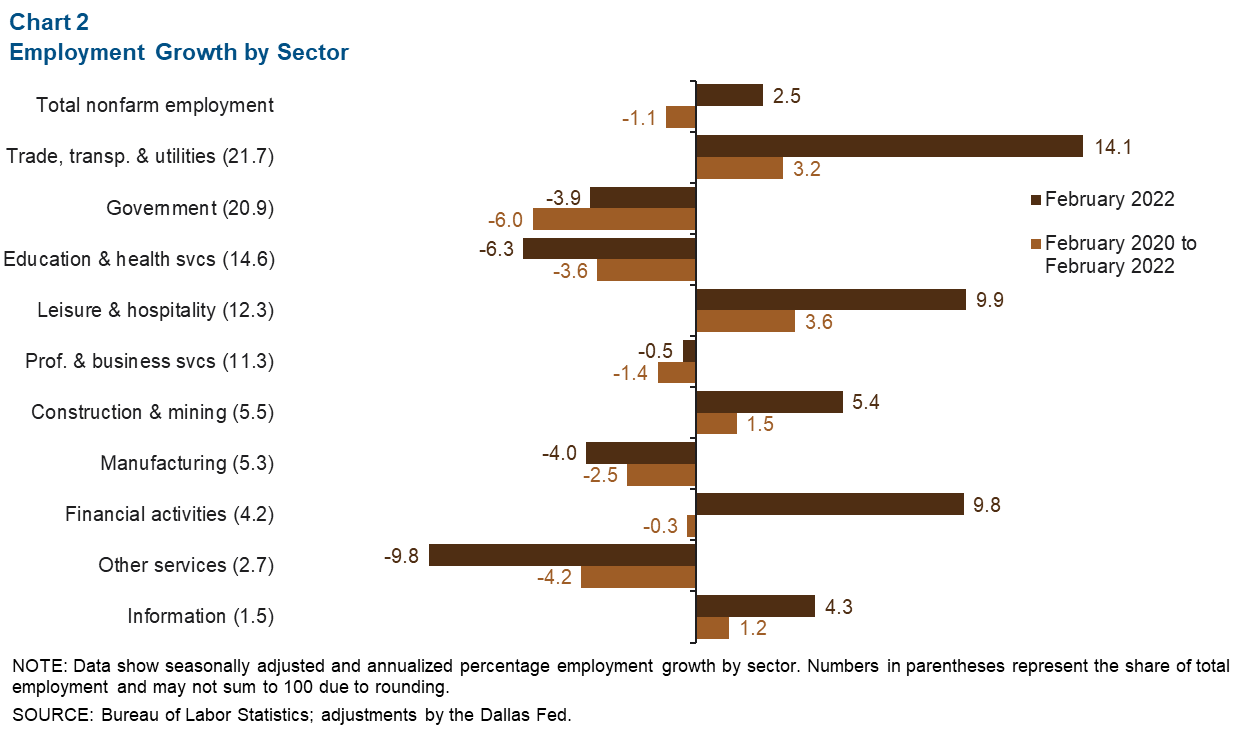
Two years since the onset of the pandemic, metro employment is down 1.1 percent, a net loss of 3,586 jobs. Payrolls are down by 4,294 positions in the government sector, 1,769 in education and health services, 525 in professional and business services, 445 in manufacturing, 382 in other services and 44 in financial activities. Sectors with employment above February 2020 levels include trade, transportation and utilities (2,169 jobs), leisure and hospitality (1,384), construction and mining (259), and information (57).
Unemployment rate remains flat
El Paso’s unemployment rate remained at 5.0 percent in February but was well down from its pandemic high of 14.5 percent in April 2020 (Chart 3). The Texas and U.S. figures dipped to 4.7 percent and 3.8 percent, respectively, in February.
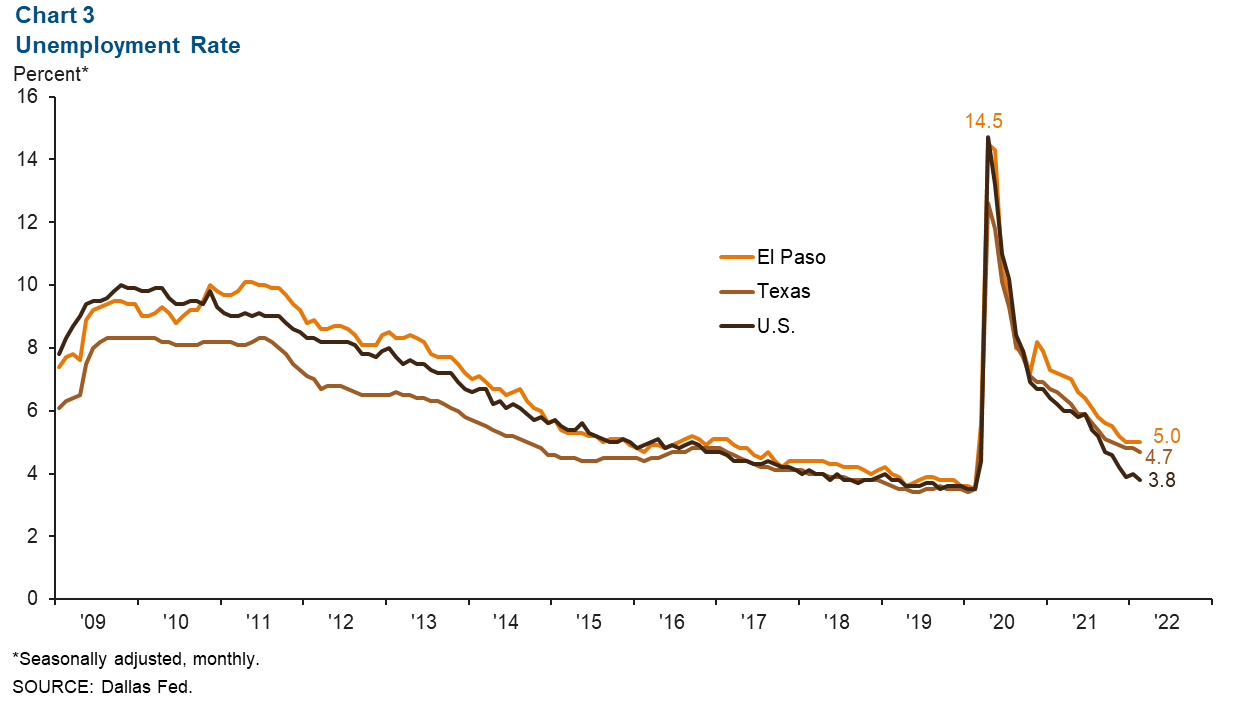
Retail sales
According to the latest estimates available, El Paso retail sales rose to $4.6 billion in second quarter 2021, up 4.0 percent from the first quarter (Chart 4). Annualized retail sales were $18.1 billion in the first half of 2021—32.3 percent higher than 2019 and 29.8 percent higher than 2020. Dallas Fed research shows that pandemic-related fiscal stimulus propped up retail sales despite the loss of cross-border shoppers after the closure of the international border.
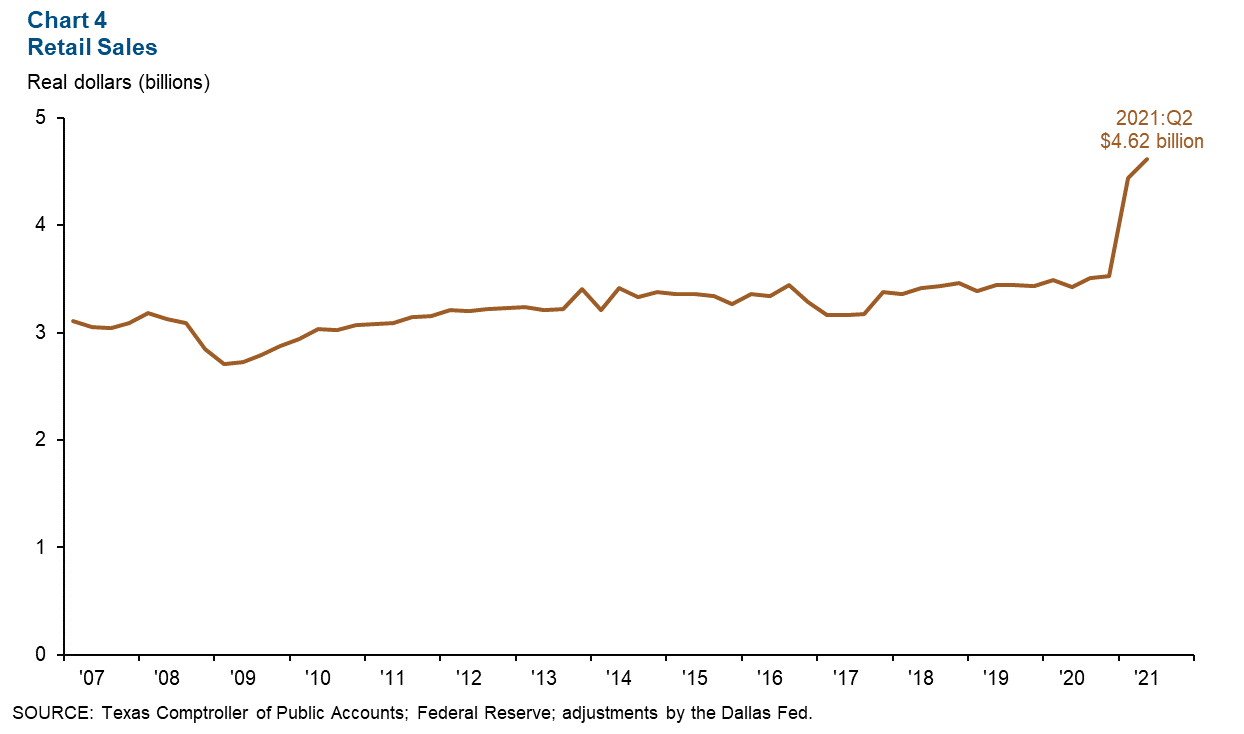
Wages
Weekly wages in El Paso rose from an average of $839 in 2019 to $890 in 2020 and were $879 as of third quarter 2021 (the latest data available) (Chart 5). The third-quarter increase represented a rise of 4.8 percent from 2019 but a decline of 1.3 percent from the 2020 average. Wage growth in 2020 in El Paso was largely due to expanded unemployment benefits, though wages still lag Texas average weekly wages. Texas wages were $1,306 in third quarter 2021, an increase of 4.3 percent from their average in 2019, and a slight rise of 0.5 percent from 2020 figures.
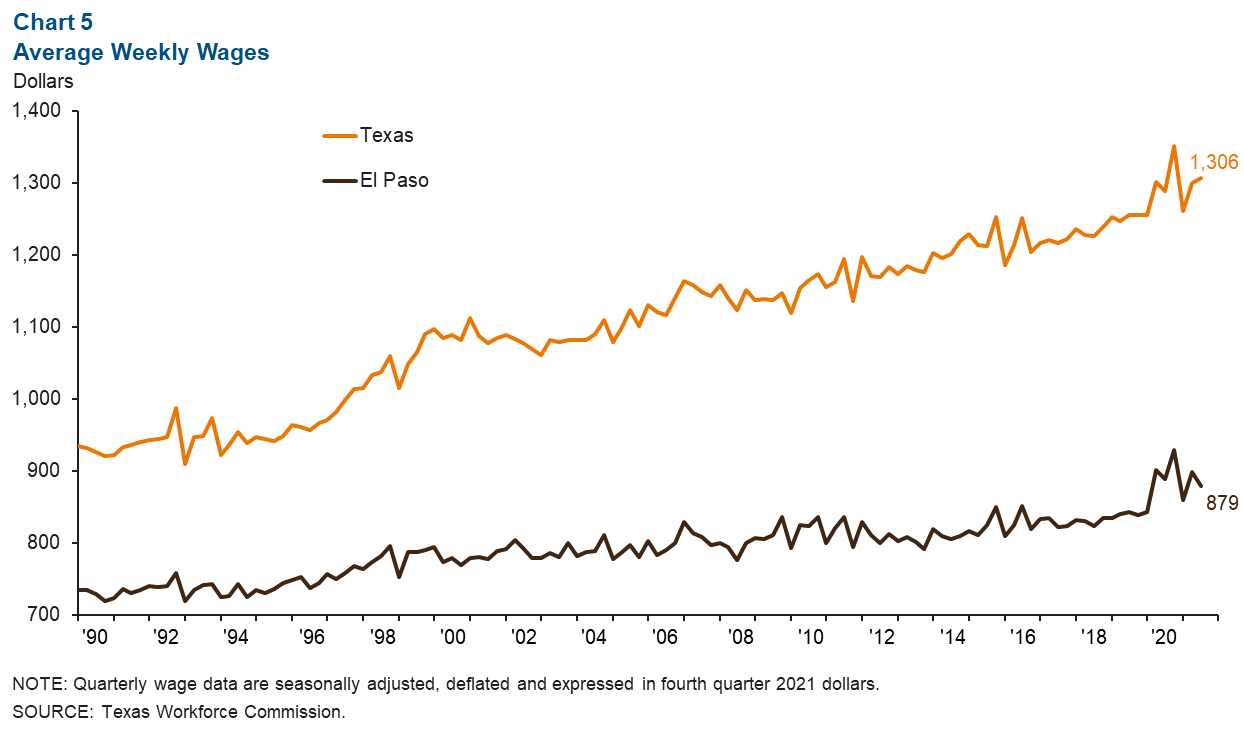
NOTE: Data may not match previously published numbers due to revisions. The El Paso metropolitan statistical area includes El Paso and Hudspeth counties.
About El Paso Economic Indicators
Questions can be addressed to Keighton Hines at keighton.hines@dal.frb.org. El Paso Economic Indicators is published every month after state and metro employment data are released.